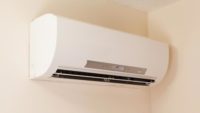A top-notch heating and/or air-conditioning system that delivers comfort and economical operation performing at peak efficiency is relatively easy to accomplish but seldom seen.
Why so elusive?
Shortcuts.
Way back in the 1970s, it was common practice in the southeast portion of Pennsylvania to use a rule-of-thumb shortcut for sizing heating and cooling: 40 Btu/h per square-foot for heating and 20 Btu/h for cooling. Life was simple back then, or was it?
In night classes we were taught I=B=R long forms to properly size heating and cooling systems, and I never had one that matched the old 40/20 shortcut. Were they a pain to fill out? You betcha, and it often took hours, but you knew your system was sized properly.
On sales calls, I took the time to measure the rooms, windows, doors, checked attics for insulation type and thickness, removed receptacle covers to peer into wall cavities for insulation, and if a basement was present, checked conditions there as well. Once I ran the numbers by hand, but as soon as we computerized, I utilized the Manual-J program to quickly calculate heating/cooling loads. In most cases, that knowledge meant my boilers/furnaces/heat pumps were lower Btu models than my competition, and doing the homework turned into winning more bids.
Another advantage of utilizing Manual-J was the ability to conduct forensic investigations into why HVAC systems weren’t providing the comfort and/or economy desired. Couple that with Manual-D, and knowing each room’s actual heat loss/gain, grants you the ability to either design and in-stall correctly sized ductwork from scratch or, better yet, determine what corrections are needed for proper airflow and delivery to every sup-ply/return register.
That mean architect
Knowing those calculations were never more important than in one new house we were hired for the PHVAC systems. The architect was feared by virtually all the subcontractors who either made sure they were not on site for his visits, or else did their best to be invisible. I witnessed him dress down several of the subcontractors, and he was intimidating to put it mildly. During one of his meetings with the general contractor, homeowners and the architect, I overheard him say the central half-bath was missing a supply register.
That half-bath was surrounded on all six sides by conditioned space and was 35 square feet. We had deliberately left out a supply register because the required airflow was less than 10 cfm. After the homeowners left, I approached the general contractor and architect to discuss the half-bath register. The architect informed me he had paid a considerable sum to a mechanical engineer and it was on the print.
Well, it wasn’t included with the blueprints we had been given by the general contractor, and the architect said we would likely be tearing out the entire duct system to start over and install it according to his mechanical engineer’s specifications. He retrieved his copy of the blueprint and I quickly realized our installed ductwork mirrored what the ME had designed. I requested he have the ME come to the site to inspect our ductwork, which he agreed to, and we all went over our ductwork and branch take-offs. Both the ME and architect agreed the only change required was to add a supply line and register for the half-bath. The only change we had to make was the screws holding all sidewall registers and grills. Phew! After that, we always had an excellent relationship with that tough-as-nails architect, and he became a direct customer for his residences over the past decades.
More Manual-J
On the hydronic side of heating, we converted dozens of steam systems to gently warmed hot water. Here again, a Manual-J on a room-by-room basis along with calculating the EDR (equivalent direct radiation) potential heat output at 215° F (low pressure steam) and see if that is oversized per the room’s actual Manual-J heat loss. In almost all cases, steam radiators were deliberately oversized so occupants could crack open windows to let fresh “healthy” air enter rooms — especially bedrooms — as no one truly understood why folks got sick over winter months.
That works to our benefit when converting from steam to hot water. On an excel spreadsheet, I labeled each room and its Manual-J heat loss. In the next column, I input the lowest water temperature on a design day (coldest day of the year) that would offset the room’s heat loss. Inevitably, one room would be the “problem child” needing the hottest water. We were able to further refine energy conservation by installing TRVs (thermostatic radiator valves) on the ones needing lower water temperatures. The only exception was the room with the thermostat.
If we were designing for radiant heating, then the intent was driving for the lowest hot water temperature on the design day. Richard Trethewey (the plumber for “This Old House”) once stated during a keynote speech that for every 3° F we can lower system water temperature, we gain 1% operating efficiency. That felt right, but I needed proof. We had three retrofit steam-to-hot-water systems installed in engineers’ homes, and I knew they had been tracking energy consumption. They had reported a reduction in energy consumption between 50% and 70%, which was consistent with feedback from other residential and commercial customers. As it turned out, Trethewey’s 3:1 ratio was pretty darn accurate.
Then came ECM (electrically commutated motor) circulators and I began to focus on the totally ignored side of hydronics: Electrical consumption. With 70% or more reduction in power consumption, this, too, could be leveraged into carving sales away from my competition. Given that outdoor reset will increase run-hours (from 2,200 to 3,000 in my heating zone), it became a simple matter of developing an Excel spreadsheet illustrating the difference between 87 Watt circulators versus ones using 10 Watts, or less, to do the same job.
I had studied my own home’s 12-circulator hydronic system while recording Watt consumption for a full heating season before converting to 10 3-Watt zone valves with two Delta-P ECM circulators and witnessed, firsthand, a 92% reduction in energy consumption. In my Excel spreadsheet, I added an annual increase in energy cost and extended that out 20 years. That difference, by itself, enabled me to take jobs away from my competition — in spite of not being the low bid.
My customers were not left high and dry. Instead, they were educated and better informed, and that always led to more sales.
Educated customers typically make better, more informed decisions.




